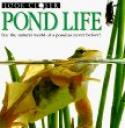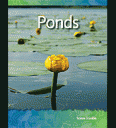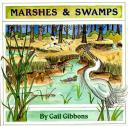This blog post is a combination of different resources regarding the VA Science SOL 3.6 and 4.5 on ecosystems, specifically ponds and wetlands (marshes). The lesson(s) regarding this material should cover the following: what is an ecosystem? what kind of plants and animals live in ponds and marshes? how would you describe a pond? a marsh (wetland)? how do these plants and animals rely on each other for survival? how do these two ecosystems compare to other ecosystems? These are just some questions that should be covered when teaching this topic.
Below I have included some books, kid-friendly websites, and helpful resources for teachers that are all about pond and marsh ecosystems!
BOOKS
Look Closer: Pond Life by Barbara Taylor
This book has wonderful, huge photographs and the text is broken up into sections; perfect for 3rd and 4th graders. It discusses all of the different pond wildlife. It also describes what ponds are, but the book definitely focuses on the animals who call a pond their home.
Around the Pond: The Wild Wonder Series by Ann Cooper
Illustrated by Dorothy Emerling
This book is definitely a good book to use when introducing ponds as one of the many ecosystems. “Around the Pond” features beautiful pictures of the different animals that inhabit ponds and Cooper holds the attention of the reader through the use of not only great artwork, but also a treasure map! Very well written and easy to understand. Great for 3rd and 4th graders.
Ponds: Biomes and Ecosystems (Science Readers) by Yvonne Franklin
This book discusses the importance of ponds and the difference between ponds and other bodies of water. Franklin talks about the different plant and animal life that can be found in ponds and different cycles that occur in this ecosystem. A great book for younger readers- grades K-3.
Marvels in the Muck: Life in Salt Marshes by Doug Wechsler
This book discusses marshes and the different plants and animals who live there. The photographs are amazing and the text is very easy to understand. Wechsler talks about how important this ecosystem is and how many plants and animals depend on it for survival. It definitely a more challenging book and is targeted for grades 4th-6th.
Marshes and Swamps by Gail Gibbons
This book is a very easy read and targeted for ages 4-8. “Marshes and Swamps” would be a good book to use as an introduction to the lesson. Gibbons discusses the relationships between the plants and animals that call marshes and swamps home and discusses different ways that these “wetlands” can be protected and preserved. The pictures are done in watercolor.
WEBSITES FOR KIDS
Science Up Close: Pond Ecosystem Podcast
This short podcast provides an overview for students about ponds and how the animals and plants that live there rely on each other for survival. This is definitely a good site to use when introducing the material.
Pond Explorer
This is a great interactive website that provides the student with a few activities and information about each of the animals that inhabit ponds. For teachers, there is a very cool hands-on experiment that is provided on the website and teachers’ notes are provided on each page of the site.
Salt Marsh Life
This website is great for students and provides them with a bunch of information about the pond as a habitat for many plants and animals. There are great photographs and the text is very easy to read/understand. You can even find where to visit a salt marsh by looking up where they are around the country.
American Field Guide
This website consists of a bunch of video clips of marshes, ponds, and other ecosystems all around the country. Students can watch these clips to learn more about the plants and animals in each of these environments.
Wet and Wild Wetlands Webquest
This is a great webquest for grade 3 and up! The students will learn all about the four types of wetlands: bogs, marshes, prairie potholes, and swamps. Groups of four take on different roles for the task: zoologist, botanist, land surveyor, and animal activist. These teams investigate physical characteristics of the ecosystems, plants and animals who live in these ecosystems, etc. Each of the different specialists have different roles and try and answer the questions that are provided.
ADDITIONAL TEACHER RESOURCES
Young Scientist’s Introduction to Wetlands
This is a 15-page print-out “book” about wetlands. Very helpful for both students and teachers when learning about ecosystems. Answers the important questions of: what is a wetland? what are the different types of wetlands? why are wetlands important? who and what lives in a wetland?
A Busy Pond Mini Book
Teachers print out this activity and students color and cut to make a mini book all about ponds and the plants and animals that live there.
A Pond Ecosystem: An Activity of Exploration
This is a lesson plan created by a teacher regarding the pond ecosystem. Within the lesson plan are six different “sessions” which include a bunch of different interactive games and fun activities. There is so much to choose from and great ideas!
Creating a Pond Habitat
This website offers a great idea: building your own pond inside or outside! Students will definitely like it if they are able to see a pond for themselves, especially if it belongs to the class. The website provides great ideas for creating your own pond. If your school does not have the resources to install a small outdoor “pond,”you can always just set one up in the classroom.







